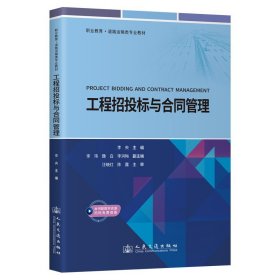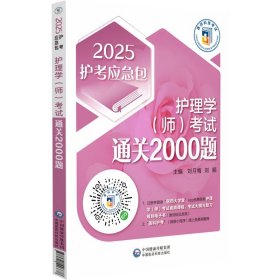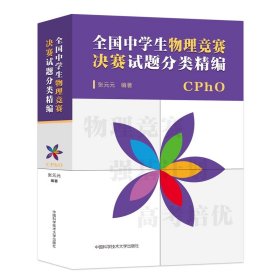
Marine cultivation technology in China(中国海水养殖技术)
全新正版未拆封
¥ 41.31 3.2折 ¥ 128 全新
仅1件
四川成都
认证卖家担保交易快速发货售后保障
作者李健
出版社中国农业出版社有限公司
出版时间2020-09
版次1
装帧其他
上书时间2024-05-03
- 最新上架
商品详情
- 品相描述:全新
图书标准信息
- 作者 李健
- 出版社 中国农业出版社有限公司
- 出版时间 2020-09
- 版次 1
- ISBN 9787109269491
- 定价 128.00元
- 装帧 其他
- 开本 16开
- 纸张 胶版纸
- 页数 504页
- 字数 710千字
- 【内容简介】
- 《中国海水养殖技术(英文版)》主要介绍海水鱼类、虾类、蟹类、贝类、海参等重要经济品种的养殖技术,从育苗、亲本选育、中间养成、商品鱼养成等环节,介绍了实用技术和模式案例,并从绿色养殖模式角度,介绍了我国优秀的现代水产养殖模式及其适用范围、养殖品种,并附有我国水产养殖相关的行业标准,旨在宣传我国在海水养殖中取得的技术和成果。
- 【作者简介】
- 李健,Dr.Li Jian,is the Deputy Dlirector General andSenior Researcher of the Yellow Sea FisheriesResearch Institute,Chinese Academy ofFishery Sciences,the Director of the KeyLaboratory of Sustainable Development ofMarine Fisheries,Ministry of Agriculture andRural Affairs of the People\'s Republic ofChina,and serves as the Director of ChinaSociety of Fisheries Mariculture Chapter.Hehas made a series of innovative achievementsin the cultivation of new varieties of marineshrimp and crab as well as the construction ofefficient and ecological aquaculture mode.Dr.Li\'s team has developed five aquatic varietiesapproved by the Chinese National CertificationCommittee for Aquatic Varieties such asChinese shrimp,swimming crab and ridgetailwhite prawn,and also developed highlyefficient aquaculture technologies includingEcological Seawater Pond Integrated Multi-Trophic Aquaculture and IndustrializedShrimp Aquaculture modes.Dr.Li once wonthe Second Prize of the State Scientific andTechnological Progress Award and the SecondPrize of the State Technological InventionAward.
- 【目录】
-
FOREWORD
PREFACE
CHAPTER 1 SEEDLINGS PRODUCTION AND GROW-OUT TECHNOLOGY
1 Introduction
2 Seedling production and grow-out technology of marine fish
2.1 The history and current status of marine fish culture in China
2.2 Introduction to several farmed marine fish species in China
2.3 Broodstock breeding and mating strategy of marine fishes
2.4 Spawning regulation technolngy
2.5 Eggs hatching of marine fish
2.6 Seedling production technology
2.7 Grow-out technology of marine fish
3 Seedling and farming technology of shrimp
3.1 Current situation of shrimp farming in the world
3.2 Current situation of shrimp farming in China
3.3 Introduction of important species of farmed prawns
3.4 Shrimp seedling technology (taking Fenneropenaeus chinensis as an example)
3.5 Main farming model of shrimp
4 Seedling and culture techniques of marine crab
4.1 Overview of crab culture
4.2 Introduction of main species of cultured crabs
4.3 Technological of breeding for P.trituberculatus
4.4 The culture technology and model of P. trituberculatus
5 Seedling production and culture techniques of marine bivalve
5.1 Overview of shellfish production in China
5.2 Bivalve seedling production
5.3 Grow-out culture
6 Breeding and culturing technology of sea cucumber
6.1 Brief introduction of the species and culture status
6.2 Biology of A postichopus ja ponicus
6.3 Artificial production of seedlings
6.4 Culture technology of A. japonicus
6.5 Prevention and control of diseses of A.jobonicus
7 Seaweeds culture theory and technology
7.1 Theory and techmology of Sacharina culure
7.2 Theory and technology of Pyropia culture
CHAPTER 2 CULTIVATION OF NEW VARIETIES OF MARICULTURE
1 Introduction
2 Selective breeding
2.1 Basic concepts
2.2 Selection methods
3 case of breding new varietiesselective breding
3.1 Case analysis of breeding new arieties-selective breding program for Pacific white shrimp (Litopenaeus amamei)
3.2 selecive breding of turtbot Sophthalmus macimus for main ecomomic trais
CHAPTER 3 MODES OF MARINE CULTURE
1 Introduction
2 Development of coastal integrated multi-trophic aquaculture in Ching
2.1 What is the integrsted multir trophic aquacultire (IMTA)
2.2 The pattens of IMTA
2.3 How to design and manargenent of MTA-Case study n Sangsou Bas
2.4 IMTA monitoring,management and suggestion
3 A novel mariculture modeRecirculating aquaculture system (RAS
3.1 What is the RAs
3.2 How to design a RAS
4 Breeding technology of deeprsea cage
4.1 Types and functions of deep sea cage
4.2 Selection of deep-sea cage
4.3 The main factors to be considered in the development of dersea cage culture
4.4 The deep-sea cage culture technology of the famous marine fish
5 Eco friendly seawater crustacean pond culturs
5.1 Introduction
5.2 Typical eco-friendly seawater pond culture modela
5.3 Principle of the seawater crustacean pond IMTA
5.4 Key aquaculture techniques
5.5 Economic and social benefits
5.6 Future prospective
CHAPTER 4 EMERGING DISEASES IN AQUACULTURE ANIMAL
1 Introduction
2 Emerging diseases of crustaceans
2.1 Acute hepatopancreatie necrosis discase (AHPND)
2.2 Viral covert mortality disease(VCMD)
2.3 Infection with Deapod iridescent wirnts I (IDIV1)
3 Diseases of concerned in marine molluscs
3.1 Infection with Ostreid herpesvirus 1 (OsHV-1 infection)
CHAPTER 5 FEED AND FEEDING FOR MARICULTURD
1 Introduction
2 Progress and prospect of fish feed industry in China
2.1 Development of fish fed industry in China
2.2 Regarding mariculture in China
3 Requirement and metabolism of main nutrients
3.1 Protein and amino acids
3.2 Lipid and fatty acids
3.3 Vitamins and minerals
3.4 Feed ingredients
3.5 Feed additives
4 Live food technology for marine fish juveniles
4.1 Feeding regime components for marine larviculture
4.2 Cultivation systerns
4.3 Cultivation of rotifers
4.4 Enrichment techniques to improve nutritional valu
4.5 Production of Artemia
4.6 Mass culture techniques in outdor ponds
5 Feeds for broodstocks
6 Experimental methodology in nutritional studies
6.1 Digestibility
6.2 Evaluation of feed efficiency and fish growth
7 Feed processing technology
7.1 Compression pelleting
7.2 Extrusion
7.3 Granule diets
7.4 Microencapsulation
7.5 Moist or semi-moist feeds
8 Feeding technology
CHAPTER 6 ENVIRONMENT MONITORING AND WASTEWATER TREATMENT FOR AQUACULTURE
1 Introduction
2 Environment monitoring
2.1 Sampling strategy
2.2 Primciple enviroumenal factors coneming marine suwculture
2.3 Sampling method
2.4 Determination method
2.5 Impact of fish and shelfish farming on marine environmental
2.6 Management and control of aquaculture environment
3 Treatment of aquaculture wastewater with constructed wetlands
3.1 What is constructed wetland
3.2 How to build a Cw
3.3 Purification effect and influencing factors
3.4 Mechanism of pollutant transfer and transformation
3.5 Application and demonstration of constructed wetland technologs
3.6 Problems and prospects
CHAPTER 7 AQUATIC PRODUCIS PROCESSING
1 Introduction
2 Basic concept
2.1 Aquatic products
2.2 Aquatic products processing
3 General situation about aquatic products processing in China
3.1 Achievements
3.2 Problems
3.3 Development strategy
4 Aquatic food raw materials
4.1 Diversity of species
4.2 Characteristics
5 Freshness-keeping of aquatic products
5.1 Principles
5.2 Methods
5.3 Example-Cold-chain logistics for Antarctic krill
6 Aquatic products processing technology
6.1 Surimi processing
6.2 Drying
6.3 Freezing
6.4 Smoking
6.5 Sousing
6.6 Innovative technologies
6.7 Example-Application of HPP in oyster processing
CHAPTER 8 QUALITY AND SAFETY OF AQUATIC PRODUCTS
1 Introduction
2 Overview of aquatic product quality and safety
2.1 Brief history of China\'s aquatic product quality and safety development
2.2 Intermational aquatic products quality and safety supervision
2.3 Quality of aquatic products (nutrition and quality)
2.4 Aquatic product safety (pollution risk)category
3 Current status of research on quality and safety of aquatic products
3.1 Main features of aquatic product quality and safety
3.2 Detection technology
3.3 Formation process of aquatic product quality and safety
3.4 Risk assessment of aquatic products
4 Aquatic product quality safety control technology
4.1 Environmental applicability evaluation technology
4.2 Production process control technology
4.3 Logistics process control technology
4.4 Certification technology of aquatic product
4.5 Market access system
4.6 Full chain traceability and traceability technology
5 Aquatic product quality and safety risk management system
5.1 Top level design of food safety risk management
5.2 Food safety rule of law system
5.3 Government food safety supervision system reform
5.4 Food safety standard system
5.5 Government food safety information disclosure
5.6 Government food safety inspection and testing system
5.7 Food safety risk monitoring and evaluation
REFERENCES
APPENDIXES
点击展开
点击收起
— 没有更多了 —












以下为对购买帮助不大的评价